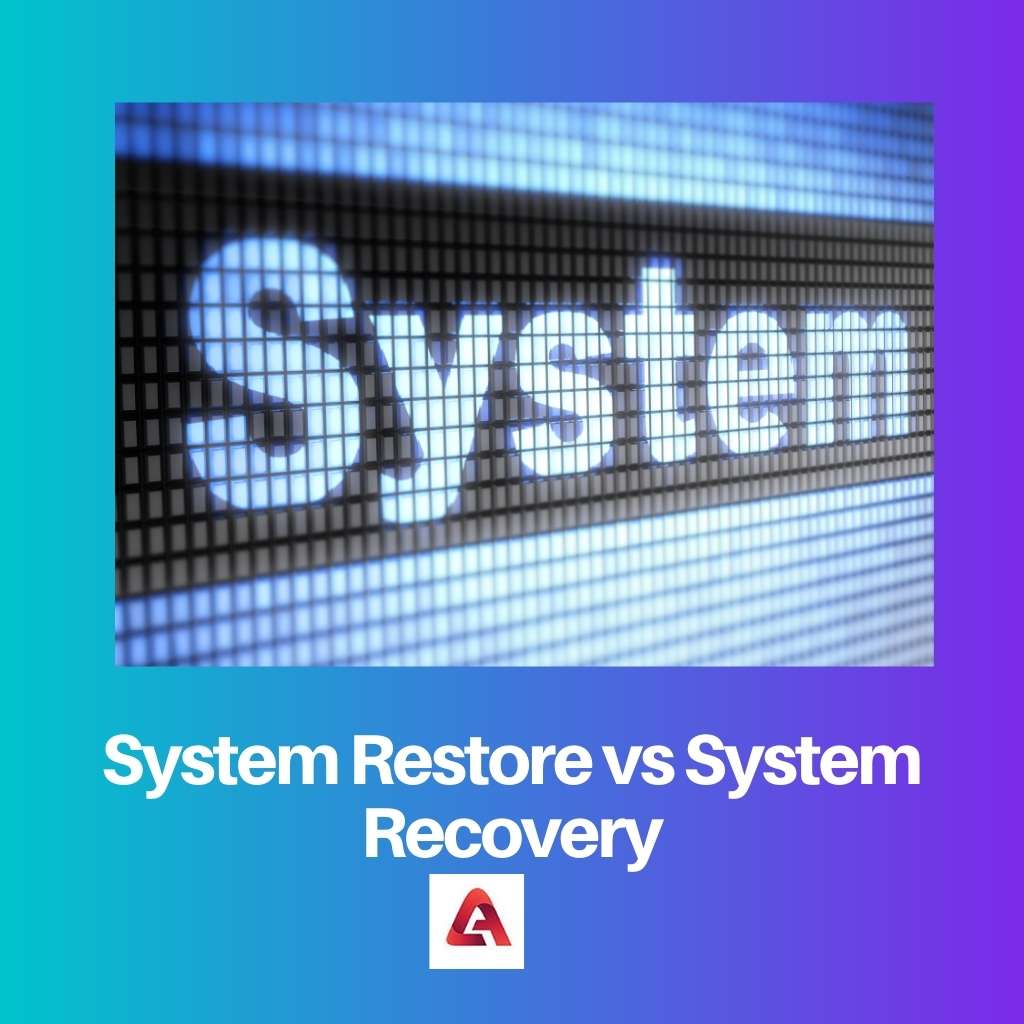System restore and system recovery come in the rolling back of the data into the disc. Both are described to fix the errors or problems in your personal computer.
But both of them are different from each other by their performances.
Key Takeaways
- “System Restore” reverses system changes by restoring settings and applications to a previous state, while System Recovery returns the computer to its factory settings by reinstalling the operating system.
- System Restore does not affect personal files, whereas System Recovery erases all data and applications.
- System Restore is faster and less disruptive than System Recovery, as it only reverts system settings, not the entire operating system.
System Restore vs System Recovery
The difference between a system restore and system recovery is their association with the systems. System restores are associated with the computer system for restoring the data, whereas system recovery is associated with the operating system to recover the data.

System restore is an operation or feature present in Microsoft Windows that makes you restore your files, applications. Restore is nothing but recovers the system malfunctions and other problems.
System restore is first used in Windows Me. The system restores option is included in all the versions released by Microsoft till now.
The system restore option is default but it is not in the on mode, the users can enable it wherever they needed it in Windows 10. But it never affects your personal documents, pictures, and files present in the system.
System recovery is a feature available in Windows. Microsoft is the developer of system recovery.
The primary task of system recovery is to recover the files from the system. It recovers the files from the previous operating state.
It is used in the case of hardware failure or operating system failure. Bootable recovery assist media is the starting step in recovering process.
The recovery environment is loaded after the first step. Then you select the location of the backup to be used.
The system recovery started.
Comparison Table
| Parameters of comparison | System Restore | System Recovery |
|---|---|---|
| Location | System restore located in the computer | System recovery is located in Windows installation |
| Manual restore point | System restore allow | System recovery does not allow |
| Hard drive crash recovery | System restore has less effect | System recovery has a greater effect |
| Backup files | Present in system restore | Absent in system recovery |
| size | Size increase with files | System recovery has fixed size |
What is System Restore?
System restore is a function present in Microsoft Windows operating system. Microsoft is the developer of system restore.
The user can manually create a restore point in system restore or move to the existing restore point and change the system configuration. To maintain the volume usage of the system within the specified amount old points are discarded.
It also provides restore points that cover the past several weeks’ data. System restores option many disable permanently when user concern about the space usage.
System restore is nothing but backing up the files and those files are used in the system recovery. The system restores also stores the registry and most drive files. Windows Registry, Files in the Windows File Protection folder, Local user profiles, COM+ and WMI databases, IIS Metabase, Specific file types monitor are monitored by system restore.
The system restore can also be customized with our needs.
System restores in the system use some amount of disk and that can also be monitored and configured. Depending on the version the amount of space occupied by the system restore varies.
By using NFTS compression and disk cleanup you can store the files and delete them from recent restore points. Sometimes the system restore option can automatically disable itself if the system memory is too low.
What is System Recovery?
System recovery is an advantageous feature founded by Microsoft and used in its Windows operating system. The four major steps in the system recovery are the recovery process, backup process, BIOS compatibility, and hardware compatibility.
Four different types of recovery systems are also available. They are recovery assist builder, system recovery, full VM recovery, and rapid VM recovery.
System recovery included four steps as mentioned above. The recovery process includes the following.
Attach the bootable drive, start the server, make recovery assist selections, select an image backup, start the recovery. Disaster recovery is another important feature present in the system recovery option.
The main advantage of disaster recovery is it can be done in minutes. It does not need hours or days.
System recovery is a built-in feature. The fundamental task of system recovery is resetting your computer or operating system.
It is a default factory resetting option. In simple words, system recovery is rolling back your machine to a new machine when your buy.
It removes all data, software, virus, and recovers them as a brand new machine. The system recovery is done only with system recovery disks.
The system recovery can handle the threatening virus that is available in your system.
Main Differences Between System Restore and System Recovery
- When compared to system restoration, system recovery is a long and difficult process.
- System restoration needs minutes or an hour, but system recovery needs hours or days.
- You can save the data in the removable disc and my documents in the case of system restore, whereas you need to save data only on a removable disc in the system recovery.
- When compared to system restore, system recovery will remove the virus and bad files that are missed by system restore.
- System restores delete the files that are installed after the restore point, whereas system recovery will delete all the hard drive files.